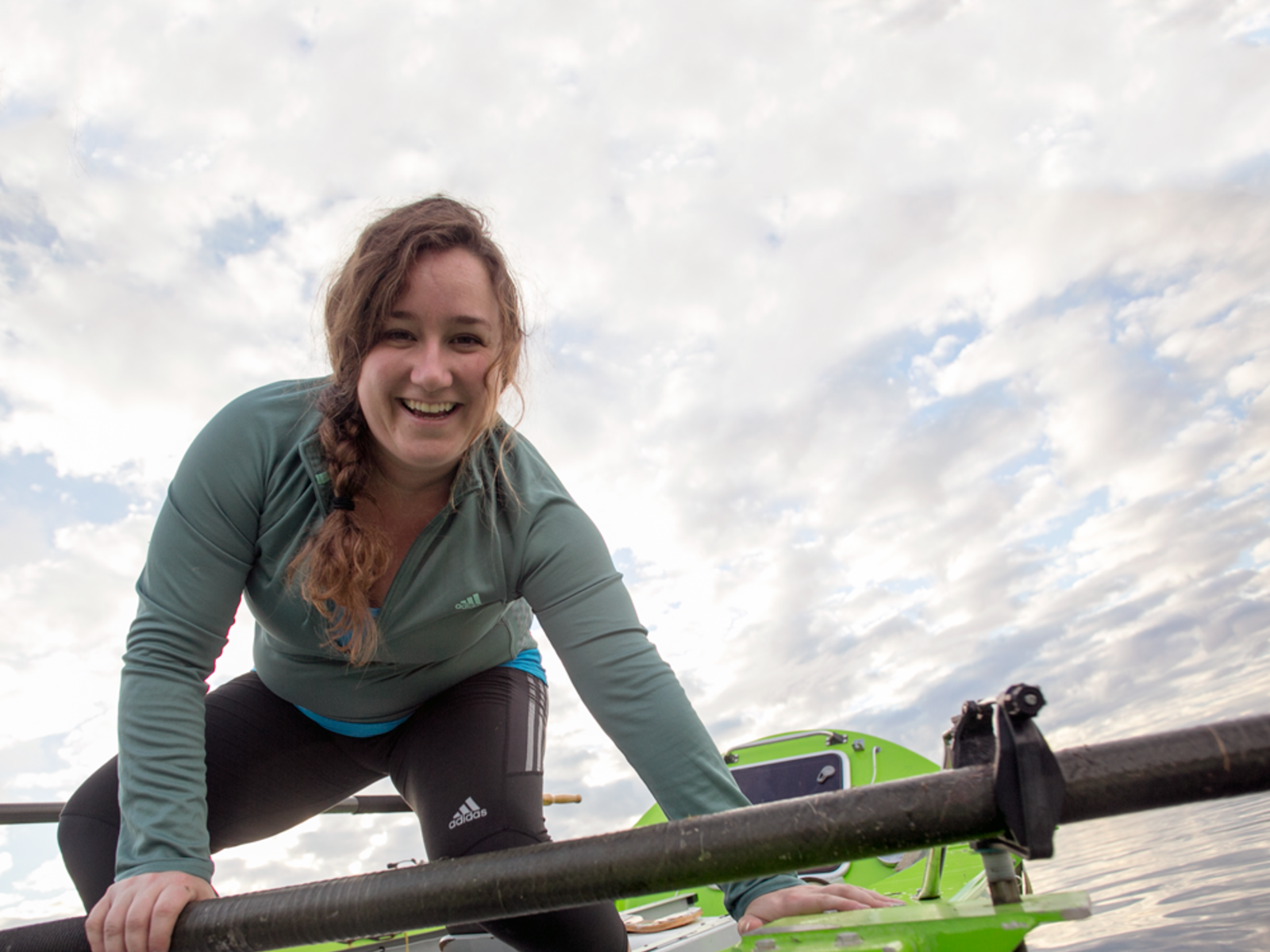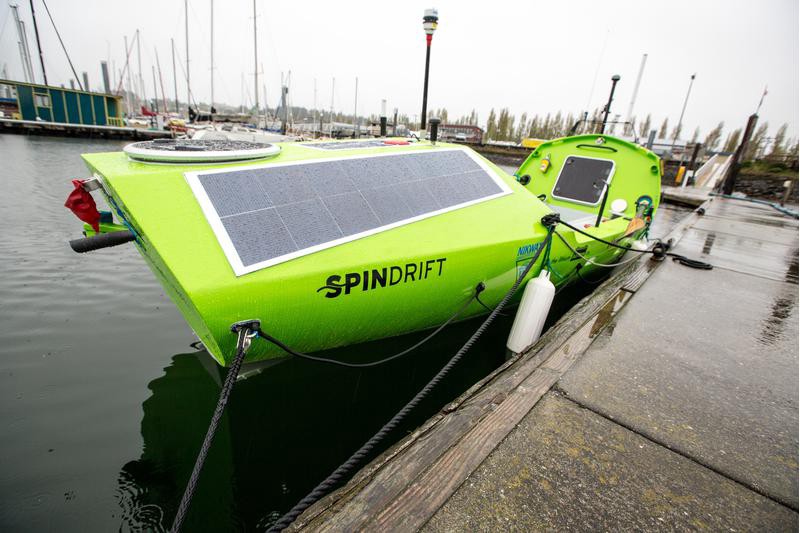

In just a few days’ time, American Sonya Baumstein will be rowing a tiny boat for a big cause–battling the entirety of the Pacific Ocean in the name of science and the environment. If she succeeds she’ll be the first woman to ever make the trip solo, traveling 6,000 nautical miles from the shores of Japan to San Francisco.
But, for this dedicated citizen scientist, crossing the Earth’s largest ocean on a boat floating only a foot above the water is just a sideshow to the real reason for her adventure–to collect ocean data for NASA with the hope of discovering more about the environment in a way that only her tiny rowing boat can.
Baumstein is no stranger to epic expeditions. In 2011 she rowed across the Atlantic, and the next year she kayaked the Inside Passage of Seattle. During the planning phases for her huge Pacific journey, the adventure scientist still ended up standup-paddleboarding the Bering Strait because she “didn’t want to take a full year off.” But this year’s voyage presents a different challenge–it’s the longest one she’s ever attempted solo.
This wasn’t originally the case. In fact, the 30-year-old rower from Orlando had first planned to complete the mission with a female partner. When the other woman backed out, there was “a lot of soul searching.” “My overall mentor asked me, “‘If you did this trip successfully with [male rowing partner] John, would you regret not having done this solo?'” said Baumstein. “I said yes–and that’s how I got to where I am today.”
It’s this inner perseverance that pushed Baumstein to forge on with her Pacific plans and find a unique way to give something back to science at the same time. While rowing halfway across the world, she will collect thousands of data points about the ocean’s temperature and salinity for NASA. Why, when NASA’s own Aquarius Space satellite is supposed to do exactly that? It turns out that for such a vastly complex satellite, not every reading Aquarius takes is entirely accurate, particularly those of the ocean’s surface (or roughly the first three feet of water).

“Scientific missions cost hundreds of thousands of dollars and they’ll maybe get two weeks at sea,” explained Baumstein. “I’m four to six months at sea, moving at a speed where the data is accurate “¦ If you’ve got a huge research vessel, which they normally are, the rock of the boat disturbs that top layer, so the accuracy of the data really only starts at 15 feet below surface. This’ll be the first time that surface data is collected for this piece of water.”
Gathering the data that NASA’s scientists can’t get also means taking a huge risk. Baumstein’s relatively small 24-foot boat might be perfect for data-gathering, but it’s also an invitation for all kinds of potentially dangerous situations along the way. From being squashed by whales and massive container ships to training herself to wake up every hour to get through the fast-flowing Kuroshio Current, Baumstein will have a lot on her mind.
In spite of the risks, however, she remains fearless because of her belief that something needs to be done about the ocean–and fast. “We’re figuring out what to do on the land, but we haven’t figured out what to do with the oceans. And it’s sad because that’s going be the driving force that affects climate change the most.”
It’s no surprise that Baumstein’s birthday, April 22, is also Earth Day, a time to reflect on how we can make a positive difference on our planet. With up to six months ahead of her after a planned launch date of May 22, she will have plenty of time for necessary thinking while crossing an ocean larger than all our continents put together–and to dream up her next big adventure.
Sonya Baumstein has partnered with ocean data providers Liquid Robotics and manufacturers SonTek for her expedition. You can follow her as she livestreams her data collection.


How We Get To Next was a magazine that explored the future of science, technology, and culture from 2014 to 2019. This article is part of our Nature & Climate section, which looks at how human activity is changing the planet–for better or worse. Click the logo to read more.
